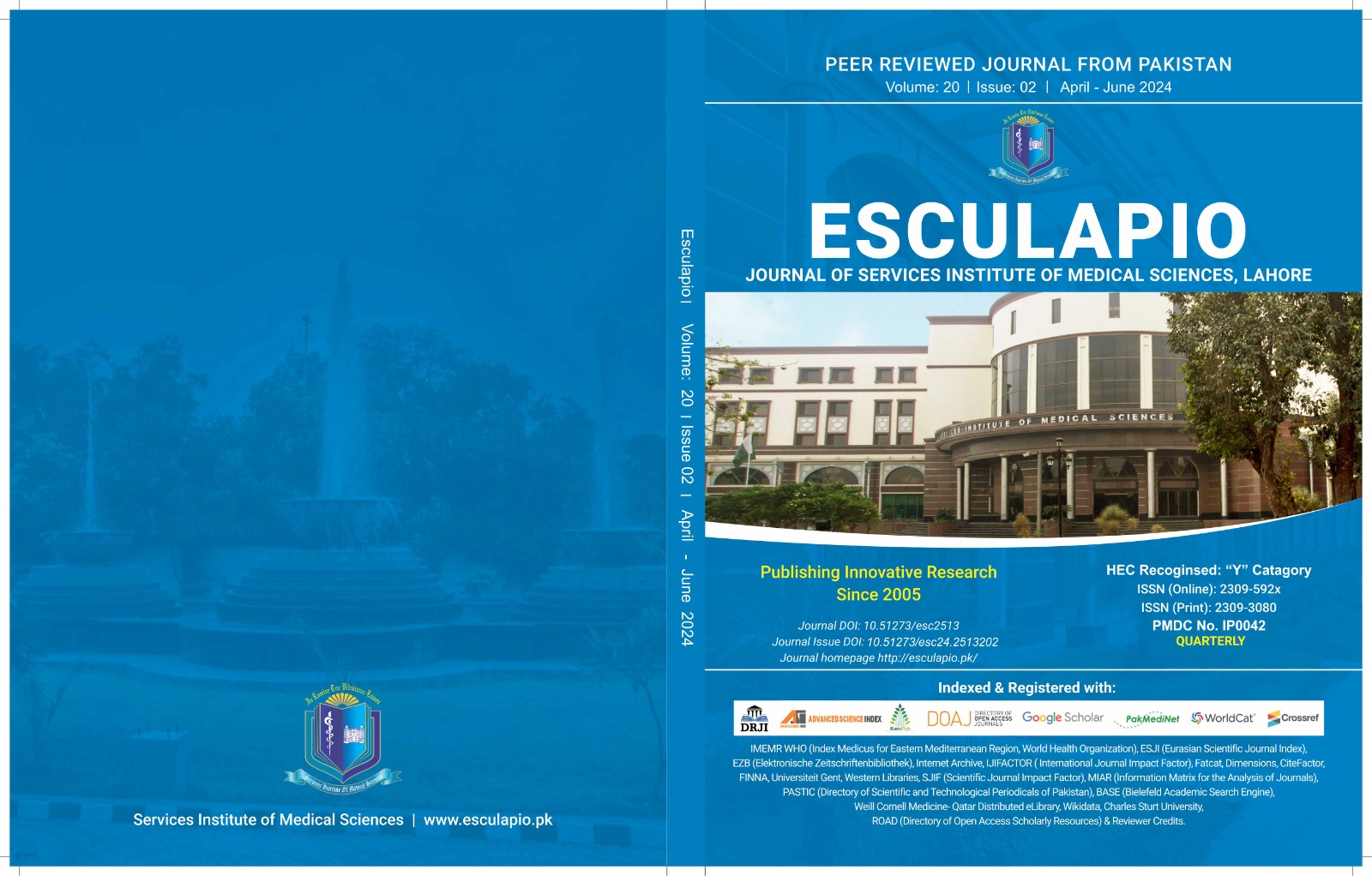Frequency of Urinary Tract Infection in Diabetic Patients Using Dapaglifzlozin
urinary tract infection using dapagliflozin.
DOI:
https://doi.org/10.51273/esc24.251320214Abstract
Objective: To assess the frequency of urinary tract infection in diabetic patient using dapagliflozin
Material and Method: This descriptive case series conducted on180 patients, from 30-70 years with type 2
DM fulfilling selection criteria. Demographic information was also recorded. Then patients were prescribed
10 mg dapagliflozin for 24 weeks. Then patients were followed-up in OPD for 24 weeks. After 24 weeks,
urine sample was taken and sent to the laboratory of the hospital. Reports were assessed and if bacterium
detected in urine sample, then urinary tract infection was labeled. Patients with urinary tract infection were
managed as per hospital protocol.
Results: In our study, of 180 cases, mean age was calculated as 49.95+5.35 years. Gender distribution shows
that 110(61.1%) cases were male and 70(38.9%) cases were females. Frequency of urinary tract infection in
diabetic patient using Dapagliflozin was recorded in 11(6.1%) of the patients. The data stratified for age,
BMI, HbA1c, and smoking, to control effect modifiers came to be significant at p < 0.05
Conclusion: We concluded, that frequency of urinary tract infection is not higher in diabetic patient using
dapagliflozin. Patients with increase age, prolonged duration of diabetes, family history of UTI, uncontrolled
diabetes and female gender are at risk for developing UTI
Downloads
Published
How to Cite
Issue
Section
License
Copyright (c) 2024 Esculapio Journal of SIMS

This work is licensed under a Creative Commons Attribution-NonCommercial-ShareAlike 4.0 International License.










